
Arthur Machen was the pen-name of Arthur Llewellyn Jones, a Welsh author and mystic of the late 19th and early 20th centuries. He is best known for his influential supernatural, fantasy, and horror fiction. His novella The Great God Pan has garnered a reputation as a classic of horror, with Stephen King describing it as "Maybe the best [horror story] in the English language." He is also well known for "The Bowmen", a short story that was widely read as fact, creating the legend of the Angels of Mons.
Theodore "Eibon" Donald Klein is an American horror writer and editor.
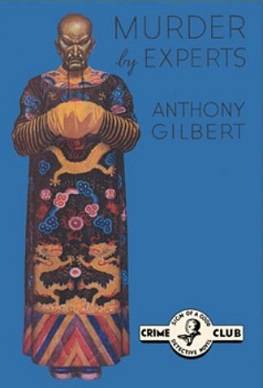
Murder by Experts is a 1936 mystery thriller novel by the British writer Anthony Gilbert, the pen name of Lucy Beatrice Malleson. It launched her long-running series featuring the shady London lawyer and detective Arthur Crook. Although she had been writing since 1926 this was her first major popular success. The plot revolves around collectors of Chinese antiques.

The Verdict of You All is a 1926 mystery detective novel by the British writer Henry Wade, his debut novel. Both this and his following novel The Missing Partners revolve around potential miscarriages of justice. It was published in the United States by Payson and Clarke in 1927. A success it launched his career as one of the prominent writers during the Golden Age of Detective Fiction. The title refers to the traditional question asked in court by a judge of the jury to establish whether they have reached a unanimous verdict.

The Bravo of London is a 1934 mystery thriller novel by the British writer Ernest Bramah. It featured his most celebrated character the blind detective Max Carrados who had first appeared in 1914. It was the first and only full-length novel to feature Carrados, who usually appeared in short stories.

Here Comes a Chopper is a 1946 mystery detective novel by the British writer Gladys Mitchell. It is the nineteenth in her long-running series featuring the psychoanalyst and amateur detective Mrs Bradley. The title references a line in the nursery rhyme Oranges and Lemons. The plot revolves around a traditional country house mystery involving a man who goes missing only to turn up as a headless corpse.

Come Away, Death is a 1937 mystery detective novel by the British writer Gladys Mitchell. It is the eighth in her long-running series featuring the psychoanalyst and amateur detective Mrs Bradley. Although the plot revolves around Greek Mythology, the title is taken from a line from Shakespeare's Twelfth Night. It was followed by a loose sequel Lament for Leto in 1971.

Tracks in the Snow is a 1906 detective novel by the British writer and politician Godfrey Benson. It was his only crime novel, he later became better known for his non-fiction works such as biographies of Abraham Lincoln (1916) and Theodore Roosevelt (1923). A popular success, it was republished in 1928, but it later fell into obscurity. Martin Edwards included it in his list of a hundred classic crime novels and noted "Benson's thoughtful, well-crafted prose, his insights into human behaviour, and the way in which the story touches on issues such as free will and the ramifications of Britain's imperial past combine to make his brief venture into the crime genre notable".
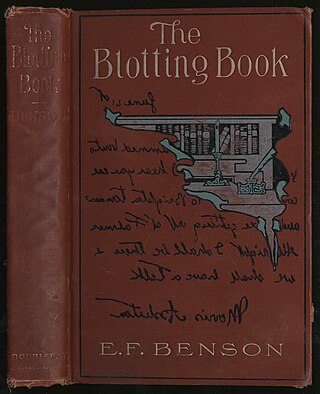
The Blotting Book is a 1908 mystery crime novel by the British writer E. F. Benson, later better known as the author of the Mapp and Lucia series. It was one of only two ventures he made into the genre during his prolific career along with The Luck of the Vails (1901). It takes place in Brighton and the nearby South Downs.

Paying Guests is a 1929 comedy novel by the British writer E. F. Benson, best known as the author of the Mapp and Lucia series. The story takes place at Wentworth, a boarding house in the fictional resort town of Bolton Spa. It focuses on the eccentric collection of summer residents, mostly there to try and recover their health, overseen by the domineering former Indian Army Colonel Chase. According to a pair of critics, "The coming together of character and situation in Paying Guests creates a comic masterpiece, worthy to stand alongside the Mapp and Lucia books".
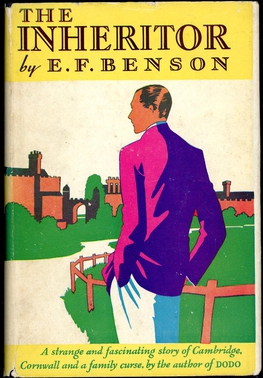
The Inheritor is a 1930 mystery novel by the British writer E. F. Benson, best known as the author of the Mapp and Lucia series. Like his earlier 1901 novel The Luck of the Vails it revolves around a curse plaguing a wealthy family. While that had downplayed the supernatural elements in favour of a crime approach The Inheritor, one of his final works, was more ambiguous.

Death in the House is a 1939 detective novel by the British writer Anthony Berkeley. It was one of a number of stand-alone novels he wrote alongside his series featuring the private detective Roger Sheringham. It was his penultimate novel, and his final whodunnit. In later years he continued writing reviews of other crime novels, but no longer wrote his own.

Cicely Disappears is a 1927 mystery novel by the British writer Anthony Cox, written under the pen name of A. Monmouth Platts. Cox used a variety of pseudonyms during his career, in this case based on two properties he was associated with in Watford. Cox had enjoyed success with novels featuring his private detective Roger Sheringham, at first published anonymously, and also wrote a number of stand-alone novels such as this one.
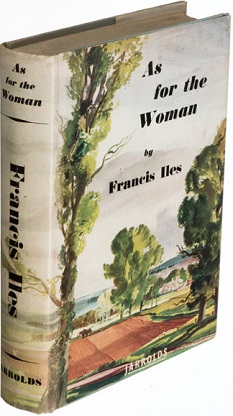
As for the Woman is a 1939 novel by the British writer Anthony Berkeley, written under the pen name of Francis Iles. It was the final novel of Berkeley, a key writer of the Golden Age of Detective Fiction, as he concentrated on reviewing after this point. He later told fellow writer John Dickson Carr that he produced the book during a period of great emotional strain and that its poor commercial and critical reception affected him badly. Thereafter he turned down all offers to write further novels. Although two further novels under the Iles name were announced by the publisher, neither of them were ever released.

The Whip Hand is a 1965 spy novel by the British writer Victor Canning. It is the first in a series of four novels about Rex Carver, a private detective drawn back into his old profession of espionage. The novel also features the secret service agent Manston who had previously appeared in The Limbo Line, Canning's previous novel.

Sir John Magill’s Last Journey is a 1930 detective novel by the Irish writer Freeman Wills Crofts. It is the sixth in his series of novels featuring Inspector French, a prominent figure of the Golden Age of Detective Fiction. Much of the novel takes place in Northern Ireland, particularly around Belfast, where Crofts had spent a great deal of his younger years before moving to England. As with many of his puzzle mysteries its solution revolves around railway timetables as well as the possible distance a boat could cover in a certain time.

Fear Comes to Chalfont is a 1942 detective novel by the Irish writer Freeman Wills Crofts. It is the twenty-third in his series of novels featuring Inspector French, a prominent figure of the Golden Age of Detective Fiction. Like much of the author's work it combines a traditional mystery with a police procedural.

Invisible Weapons is a 1938 detective novel by John Rhode, the pen name of the British writer Cecil Street. It is the twenty eighth in his long-running series of novels featuring Lancelot Priestley, a Golden Age armchair detective. A locked room mystery, the title revolves around the fact that two murders are committed by apparently invisible methods.
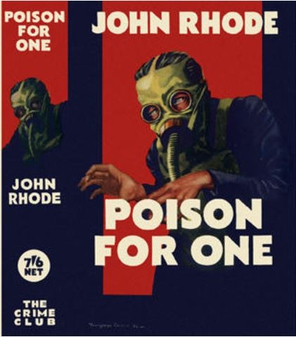
Poison for One is a 1934 detective novel by John Rhode, the pen name of the British writer Cecil Street. It is the eighteenth in his long-running series of novels featuring Lancelot Priestley, a Golden Age armchair detective. It combines elements of the locked room mystery and country house mystery.

The Dangerfield Talisman is a 1926 mystery detective novel by the British writer Alfred Walter Stewart, published under his pen name J.J. Connington. It was his second entry into the genre following his debut Death at Swaythling Court. Notably the plot revolves around the disappearance of a family heirloom rather than a murder. The following year he wrote Murder in the Maze the first in a series of novels featuring Sir Clinton Driffield, one of the Golden Age Detectives.



















